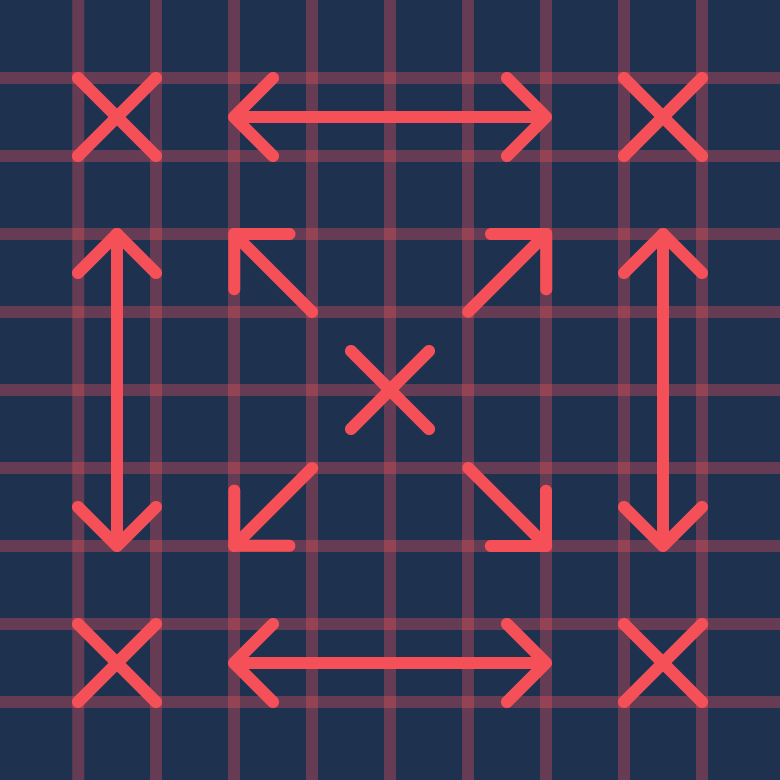Collaborative ecosystem in a nutshell
Status quo: Change-as-Usual
A more collaborative ecosystem…
- By improving collaboration with supply chain partners (usually through new technology), it helps allocate risks more appropriately and reduce costs for companies
Future quo: Breakthrough
...that focuses on systemic impact and change
- Beyond the traditional supply chain, companies can create and scale system-level impact by working with non-traditional partners – e.g. competitors, other industries and sectors
What is it?
From value chains to value webs
Here, the ecosystem is defined by Accenture as “a company’s competitiveness network: an increasingly global, multi-industry nexus of partners (suppliers, institutions, customers) and stakeholders through which business problems are solved and outcomes are shaped”. To thrive in a world where sports apparel companies are now delivering health outcomes, and where carmakers are now delivering mobility, companies are waking up to the need to develop a strong ecosystem of partners across the customer value chain, and beyond.
Deloitte takes this idea one step further. They define traditional value chains as creating value “based on the production of goods and services”. Value webs, however, create value “based on knowledge exchange that drives proactive production of goods and services”, through various collaborative processes.
Some ways that businesses are now collaborating include:
POOLING RESOURCES, REDUCING COSTS:
Models here range from industrial symbiosis, where companies share services, utility, and by-product resources among industries in order to improve resource efficiency, to other types of partnerships, such as Toyota and Suzuki’s latest technology tie-up that draws on each other’s expertise in developing next generation vehicles.
CREATING NEW, ADDED VALUE FOR CUSTOMERS:
Customers are demanding more sophisticated, complete solutions that might be beyond the capability and capacity of one company. ARM Holdings, a major supplier of semi-conductors underpinning computing technologies, notes that its business model is based on “creating a partnership with customers and broader community of third parties to enable the creation of end products more efficiently through ARM than from any other source”.
STIMULATING COMPLEMENTARY INVESTMENTS:
To drive interest amongst complementary partners, companies need to reduce uncertainty and provide their collaborators with a clear vision of what they intend. In the case of Tata Motors, its chairman openly initiated the development of the Nano as the world’s cheapest car, which resulted in partners across its supplier network submitting new approaches of low-cost component parts which in combination, enabled the production of the Nano. The Nano may now be considered a market failure, but the price reduction impacts were extraordinary.
LOOKING BEYOND THE CUSTOMER VALUE CHAIN:
In the case of making autonomous vehicles to go mainstream, beyond obvious collaborators such as technology companies, an automobile company might start to envision a new “mobility ecosystem” also comprising city planners, energy players, public transportation providers, regulators, infrastructure companies, insurance firms and peer-to-peer networks.
HARNESSING THE WISDOM OF CROWDS:
Crowdsourcing the best insights and talent, often sitting outside one’s companies, is a new competitive advantage for companies. Otherwise known as Open Innovation, examples include Yelp which relies on community members to review listings, to LEGO whose Ideas portal allows fans to submit ideas for new toy sets, and Unilever's Open Innovation platform which invites practical innovation ideas from suppliers, start-ups, academics, designers and individuals that can help it achieve their Sustainable Living Plan.
What's driving it?
Connectivity at all levels, and directions
Digitalisation, the Internet of Things and Big Data are among the innovations enabling connectivity at an unprecedented level – between things, people and organisations, across traditional boundaries of company, industry and geography. Blockchain - providing an unhackable virtual record – will also add a layer of transparency on interactions across the value chain, and web, as interactions become more complex.
What are the opportunities and risks?
Ecosystem collaboration, for systemic impact
All of the global challenges exemplified by the SDGs are systemic, to a greater or lesser degree, requiring true collaborative across diverse companies, and other stakeholders, to address. In less developed markets, some parts of which are referred to as the “base of the economic pyramid,” for instance, businesses have had to adopt various initiatives to reinforce the marketplace through local market adaptation, social programs, as well as alternative financing mechanisms – all of which typically require partnership with local partners.
In order to achieve systemic impact and change, companies need to tune into opportunities for pre-competitive collaboration, and at the same time, effectively manage Intellectual Property (IP) and other legal considerations that are likely to emerge. Levi’s, as an example, spent 9 years perfecting techniques radically reducing the water used to make a pair of jeans or denim jacket. In early 2016, it invited 20 of its competitors to its Eureka Innovation Lab to learn from and co-evolve the approach. With the potential for 50 billion liters of water in savings across the industry, Levi’s made the decision to open source its production techniques, acknowledging the importance of industry-wide action.
Get started
How can companies engage?
Some questions to consider:
- What are the most challenging issues your organisation is dealing with – who else in your ecosystem (or outside it) can you potentially partner with?
- What systemic issues is your organisation able to influence. Who can you work with maximise collective impact – and what models are there in other sectors or markets?







